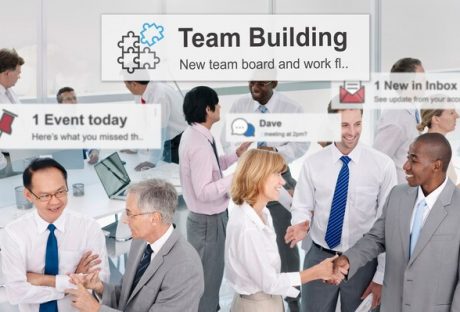An effective sales pipeline allows teams to develop and execute strategies that convert prospects to buyers quickly and consistently.
Establishing yield probability estimates at each stage helps teams determine monthly or quarterly revenue projections as well as spot bottlenecks in the process.
Standardized processes help salespeople collaborate on a common strategy and shorten sales cycles.
Contents
Defining The Pipeline
A sales pipeline is an organized visual representation of your sales process. It not only tracks leads but also prospects from various stages to closing. Often described in terms of horizontal bars or funnels, sales pipelines typically represent various steps within an ideal customer profile (ICP) buying journey.
For example, suspect, prospecting, analysis, and negotiating closing. It’s crucial that these stages are identified clearly to set expectations among your salespeople. You can visit Clickfunnels to learn more. It is important to visualize the sales process.
Beginning The Process Of Creating A Sales Pipeline
Establishing your sales pipeline starts with collecting a list of prospective buyers. The latter must meet your company’s target audience and ideal customer profile. Additionally, you might need their contact details and other pertinent details.
Next, build buyer personas for each prospect. The more in-depth the personas are, the easier it will be to understand their pain points and specific challenges. As a result, you can customize your messaging appropriately.
As part of building your pipeline, it can be helpful to develop a forecast based on your average sales cycle. You can also determine the length of each step in your sales process. This will give you a sense of how many leads and revenue are necessary at each pipeline stage, as well as whether your goals can be reached.
At times, it’s also essential to review your pipeline periodically in order to identify deals that have remained dormant for an extended period. Doing this will prevent your sales pipeline from becoming blocked up with old deals while setting realistic expectations about future performance.
Identifying the Stages of the Pipeline
When creating a sales pipeline, it is essential that each stage be identified. This will allow you to determine which steps a potential customer needs to go through before becoming ready to purchase and can also assist in tracking metrics like win rate and revenue. Once identified, lead nurture sequences can begin.
Prospecting
Prospecting is the initial stage in any sales pipeline. This involves identifying and cultivating leads through activities like marketing campaigns, social media engagement, email outreach, or cold calling to identify prospective leads who might be suitable candidates for your products and services.
Here, the goal should be to uncover any mutual interests between yourself and a prospect that might indicate compatibility for sales success.
One-On-One Meetings
Once prospects reach the qualification stage, they’re often eager to learn more about your company through an in-person meeting, free trial, or product demo, and can also include sales meetings.
This step of your sales pipeline gives your team a crucial chance to differentiate your solution and establish credibility while gathering essential details such as budget and ownership information about each prospect.
When selling to businesses, it is vital to fully comprehend their current problems and challenges so you can create an effective business case around how your products or services will address these challenges.
Analysis
The needs analysis stage of a sales pipeline typically includes meetings with stakeholders, competitor research, and establishing ROI projections, all designed to position your solution as the most cost-effective one on the market while crafting winning proposals. You can visit this site to learn more about ROI.
Settling On Terms
The final stage of your sales pipeline involves finalizing terms with prospects and preparing to implement your solution. Depending on the size and structure of the deal, this may involve negotiating pricing terms or legal issues as part of this phase.
Measuring Your Sales Pipeline Success: Steps That Often Go Unnoticed
Just like physical pipelines, pipelines have an endpoint or destination. This point corresponds with company sales goals or revenue targets.
Identifying the Prospects
A successful sales pipeline begins by creating an in-depth list of potential customers that aligns with the company’s ideal customer profiles and target audiences. Additionally, it includes a number of prospects with rough pipeline stages. Therefore, the team is focused on only moving through promising prospects in its sales cycle.
The next step is of paramount importance in the sales process. Here, the team analyzes lead scoring to identify hot leads from cold opportunities. Furthermore, it prevents sales reps from spending too much time with those who won’t buy or aren’t interested. In this step, they also create and foster relationships with prospective customers through scheduled meetings, product or service demos, and price quotes.
As prospects progress through your pipeline, some may fall out while others will close.
While this is expected, it’s essential that you understand why some prospects drop out. For example, if 40% of your prospects drop off between the presentation and proposal stages, this could indicate problems with presentation or pricing that need fixing. Especially if you want to increase the pipeline conversion rate. Identifying any such problems early can help you fix them effectively while improving conversion rates.
The Only Drawback…
One of the biggest problems in sales pipeline management is when teams try to push deals through without fully comprehending customer needs. As a result, it leads to missed quotas and lost revenue for a company.
To combat this problem, having a well-defined sales process with steps necessary for each prospect to become a customer is essential. You can click here: https://www.wikihow.life/Manage-a-Sales-Team to learn more.
Set up an ongoing sales review process to ensure everyone stays on track. Sales managers should meet with each rep once a week to review data in their CRM. The latter can be used to monitor how each is performing and compare it with quota goals.
Finally, sales managers should ask each rep to quickly summarize each deal. So that they can give feedback or address any potential issues that may have surfaced during that week.
Identifying the Opportunities
At all stages of the sales pipeline, salespeople need to identify prospects through lead scoring. Hence, this method takes into account each prospect’s needs and budget before moving them along to the next stage.
Furthermore, leading technology can assist salespeople in prospecting, scoring, qualifying leads, and making sure no opportunities slip through the cracks.
Utilizing sales team efficiency tools can increase efficiency and decrease workload. This ultimately frees them up to focus on nurturing relationships with customers instead of data entry or administration tasks.
In turn, this can increase retention rates while decreasing customer churn rates. Furthermore, it’s key that sales organizations establish clear goals for their sales pipeline on the basis of organizational revenue goals. Moreover, it should have clear communication with sales staff members regularly during performance reviews and regularly tracked via metrics.
Conclusion
An effective sales pipeline is in constant flux as new opportunities arrive and others move through its stages. Regularly clearing out stalled prospects helps ensure its smooth running. It also provides sales managers with an accurate view of its health.
When creating a sales pipeline, it’s vital to take into account both potential buyers and their average deal size. This will allow you to assess how many prospects are necessary in each sales stage. The goal is to meet targets and develop monthly or quarterly goals accordingly.
Close ratio tracking can also provide valuable insight into the performance of your sales team as well as product value and pricing structure. This metric can assist in measuring how effective your team is in delivering services or selling products to customers.
Read Also:























